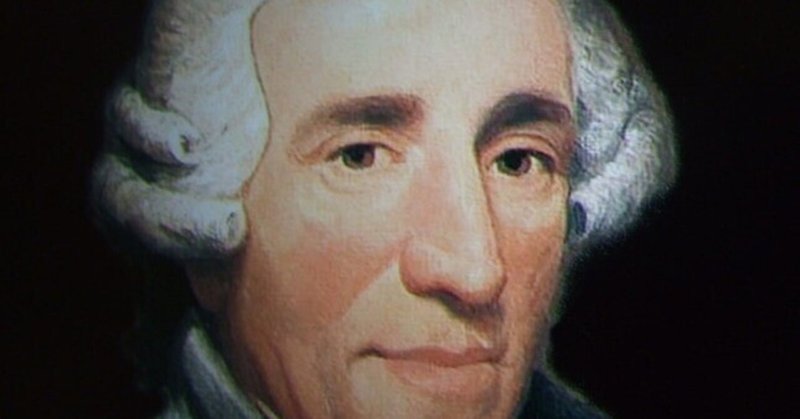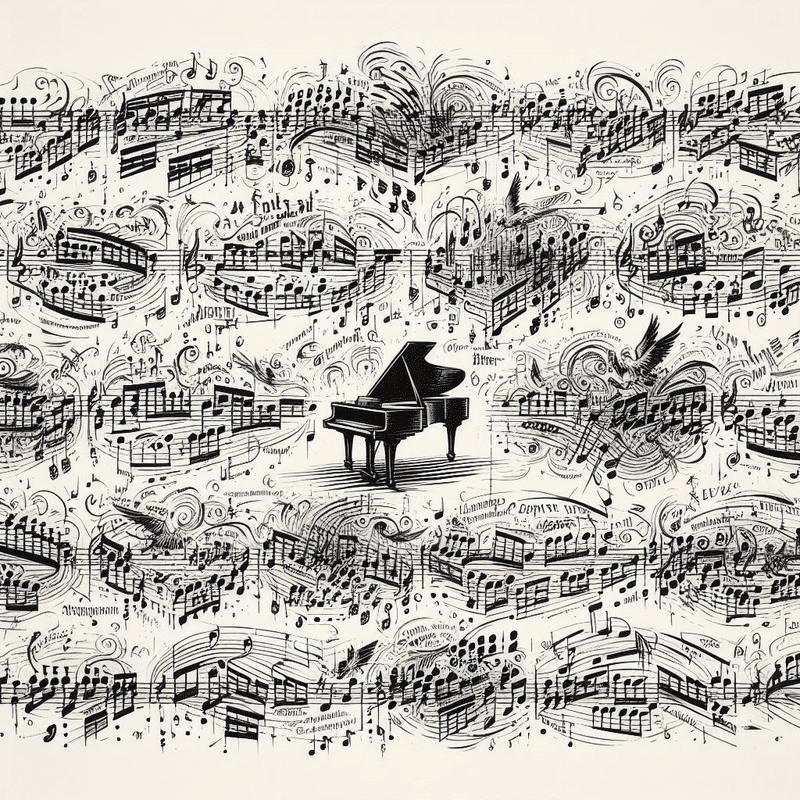
バーンスタインとウィーン・フィルが奏でるハイドンの純音楽的な美しさ「V字」
こんばんは。音楽評論家の和田大貴です。
ハイドンの交響曲第88番についてお話ししたいと思います。この曲は、ハイドンの交響曲の中でも特に人気が高く、私も大好きな一曲です。この曲の魅力は何でしょうか?それは、ハイドンの音楽が持つ明るさやユーモア、自由さや創造力が見事に表現されていることです。この曲を聴くと、ハイドンの音楽の世界に引き込まれて、心が晴れやかになります。
この曲は1787年に作曲されました。ハイドンはこの年、オーストリアのエステルハージ家の宮廷楽長として働いていましたが、宮廷楽団が解散されたために自由な時間が増えました。そのため、彼は友人や知人からの依頼に応えて多くの作品を作曲しました。交響曲第88番もその一つで、ハイドンの友人であるヴァイオリニストのトストに依頼されて書かれました。トストはこの曲をパリで演奏するために必要としていました。
この曲は『V字』という愛称で知られていますが、これは後にロンドンで出版された際に、整理番号として付けられたもので、曲の内容とは関係ありません。しかし、この愛称はこの曲の明るく勝利感に満ちた雰囲気を象徴しているとも言えます。
この曲は4つの楽章からなりますが、どの楽章も素晴らしいです。
第1楽章はアダージョの序奏に続いてアレグロの主部が始まりますが、この楽章では一つの主題が巧みに展開され、音楽の対比や和声の変化が楽しめます。
第2楽章はラルゴの変奏曲ですが、主題と6つの変奏からなり、主題はオーボエとチェロの二重奏で紹介されます。この楽章では突然ティンパニとトランペットが登場し、驚きを与えます。このように緩徐楽章にティンパニとトランペットを使うのは当時としては珍しい手法でした。
第3楽章はメヌエットとトリオですが、メヌエットは装飾音を多用した華やかな音楽です。トリオはファゴットとヴィオラによる土俗的な音楽です。
第4楽章はアレグロ・コン・スピーリトのロンドソナタ形式ですが、主題はファゴットと第1ヴァイオリンで始まります。展開部では主題に戻ったところで弦楽器によるカノンが見事に演奏されます。この楽章は明るく軽快な音楽で曲のクライマックスを飾ります。
私がこの曲を聴くときによく聴くのは、ウィーン・フィルハーモニー管弦楽団とレナード・バーンスタインの共演です。
バーンスタインはハイドンの音楽に対して深い敬意と愛情を持っていました。彼はハイドンの音楽を聴くと幸せになれると言っていました。この録音を聴くとその気持ちが伝わってきます。
バーンスタインの指揮はハイドンの音楽の明るさやユーモア、自由さや創造力を素晴らしく表現しています。ウィーン・フィルの演奏も美しく豊かな音色と溌剌とした躍動感でハイドンの純音楽的な美しさと魅力を際立たせています。
この曲を聴くと、ハイドンの音楽の世界に入り込んで、心が晴れやかになります。この曲は、ハイドンの交響曲の中でも最高傑作の一つと言えるでしょう。皆さんもぜひ一度聴いてみてください。
Haydn's pure musical beauty "V-shape" played by Bernstein and the Vienna Philharmonic
Good evening. My name is Daiki Wada and I am a music critic.
I would like to talk about Haydn's Symphony No. 88. This piece is one of Haydn's most popular symphonies, and one of my favorites as well. What is the appeal of this song? It is a wonderful expression of the brightness, humor, freedom, and creativity of Haydn's music. When you listen to this song, you will be drawn into the world of Haydn's music and your heart will lighten up.
This piece was composed in 1787. During this year, Haydn worked as the court Kapellmeister for the Esterházy family in Austria, but as the court orchestra was disbanded, he had more free time. Therefore, he composed many works in response to requests from his friends and acquaintances. Symphony No. 88 is one of them, and was written at the request of Haydn's friend, the violinist Tost. Tost needed this piece to perform in Paris.
This song is known by the nickname "V", but this was given as a reference number when it was later published in London, and has nothing to do with the content of the song. However, this nickname can also be said to symbolize the song's bright and triumphant atmosphere.
This piece consists of four movements, all of which are wonderful.
In the first movement, the main part of the Allegro begins after the Adagio introduction, and in this movement, one theme is skillfully developed, and you can enjoy the musical contrasts and harmonic changes.
The second movement, Largo Variations, consists of a theme and six variations, with the theme introduced by an oboe and cello duet. In this movement, the timpani and trumpet suddenly appear, creating a surprising surprise. This use of timpani and trumpet in the slow movement was an unusual technique at the time.
The third movement is a minuet and a trio, and the minuet is gorgeous music that uses many grace notes. Trio is vernacular music for bassoon and viola.
The fourth movement is in Allegro con spirito rondo sonata form, but the theme begins with bassoon and first violin. In the development section, when the theme returns, the stringed canon is played beautifully. This movement decorates the climax of the piece with bright and light music.
When I listen to this song, I often hear it performed by the Vienna Philharmonic Orchestra and Leonard Bernstein. (https://www.youtube.com/watch?v=bXEldU1UC70&t=55s) This is one of Haydn's symphonic recordings with Bernstein conducting the Vienna Philharmonic.
Bernstein had a deep respect and love for Haydn's music. He said that listening to Haydn's music makes him happy. When you listen to this recording, you can feel his feelings.
Bernstein's conducting wonderfully expresses the brightness, humor, freedom, and creativity of Haydn's music. The Vienna Philharmonic's performance also highlights Haydn's pure musical beauty and charm with its beautiful, rich tone and lively dynamism.
When you listen to this song, you will enter the world of Haydn's music and your heart will become clear. This piece can be said to be one of Haydn's greatest symphonies. Everyone, please give it a listen.

よろしければサポートお願いします! いただいたサポートはクリエイターとしての活動費に使わせていただきます!
